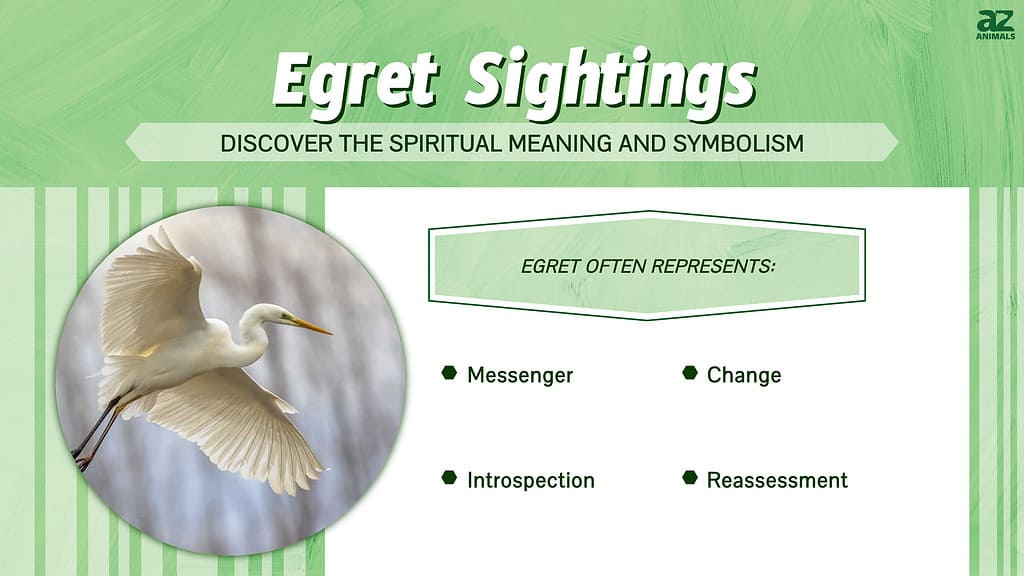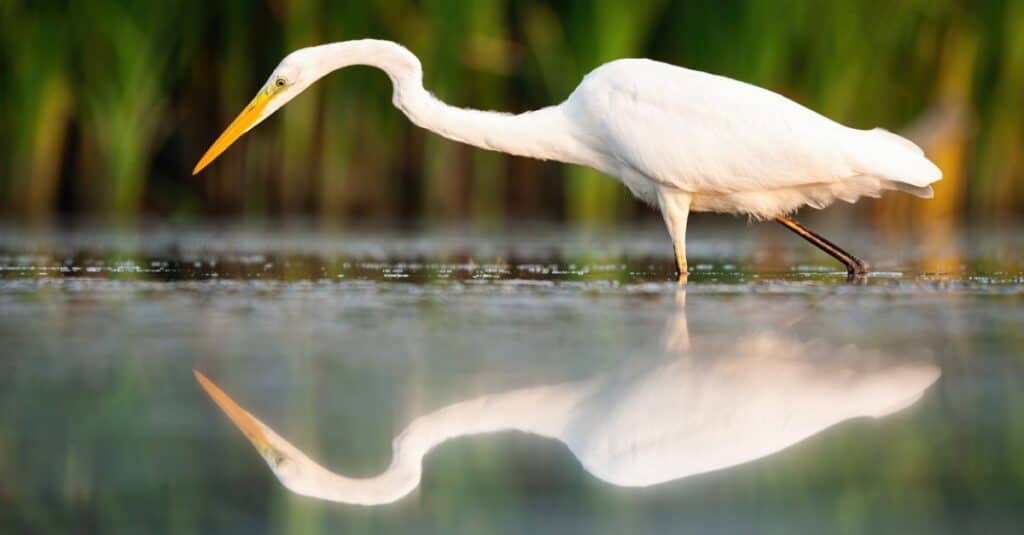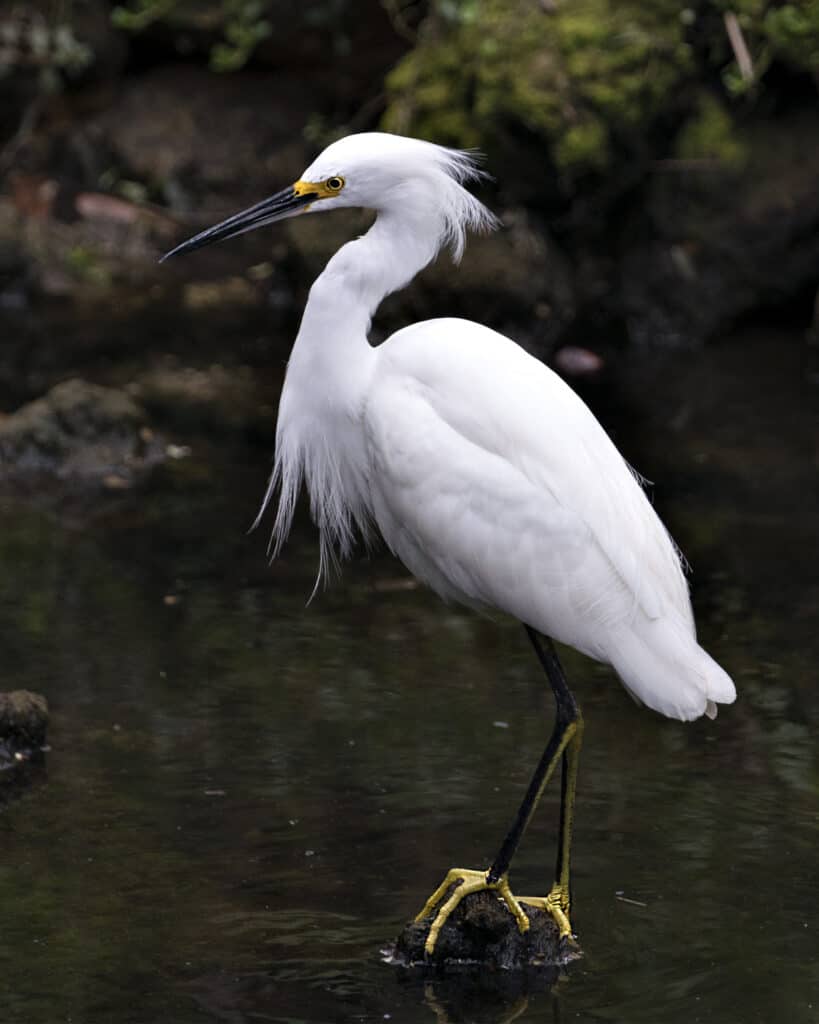
Egrets are intentional in the way they stand, the way they fly, and the way they employ patience. As an observer of egrets, you can learn a lot about them. If you’ve been experiencing egret sightings, you may be wondering what the message is. Discover the spiritual meaning and symbolism of egrets!
What is an Egret?
Egrets are birds that fall under the species of heron. Most of these types of birds have white plumage and during the breeding season, things get a bit fancier. Their mating behavior is much like it is for other herons, but they take it up a notch. Their plumes get long and decorative as if they were adorning themselves with extra accessories to catch the attention of a mate. Egrets have a special spiritual meaning and symbolism but first lets learn more about these magnificent birds.
Types of Egrets
Great Egret
Scientific name: Ardea alba
The great egret is also called the common egret. These herons love snacking on fish, enjoy marshes, and use trees for nesting. They are well-regarded for their elegant appearance. They are a tiny bit smaller than the great blue heron but noticeably slenderer. Their appearance is striking when their wings are tucked against their bodies but when they expand them, they’re even more awe-inspiring. When hunting, they’re sneaky, engaging in stalking behaviors while patiently waiting to capture fish.

Great egrets enjoy wetlands in summertime.
©WildMedia/Shutterstock.com
Little Egret
Scientific name: Egretta garzetta
Little egrets can be either dark or light-colored. They are medium-sized and thin herons with long, slender necks. Their legs are dark, and their feet are almost always yellow. When it’s breeding season, the little egret’s head changes as well as its plumes. Usually, when this bird is light-colored, it’s all white but there are instances when black feathers freckle the otherwise white color. Nevertheless, these birds vary greatly and may even be blue. Their bill colors differ as well and may be black, brown, or yellow.

The little egret has a long, slender neck.
©Paul Wranek – Copyright A-Z Animals
Snowy Egret
Scientific name: Egretta thula
When snowy egrets reach adulthood, they are all white with bright yellow accented feet. Their legs are black as well as their bills and just above their bills, they sport a patch of bright yellow, matching the bright color of their feet. You can find them foraging for insects around washed-up debris. Like other herons, their legs are thin, and their bills are long, slender, and pointed.

The snowy egret lives on the Gulf Coast year-round.
©iStock.com/Rejean Bedard
Cattle Egret
Scientific name: Bubulcus ibis
Cattle egrets enjoy marshes as their habitat and eat insects off the ground where they forage. The cattle egret has a short, thick neck and prefers spending time snacking around grazing cattle. You may even spot these birds comfortably standing on a cow’s back, picking ticks off of its skin. These are much stockier birds than other herons and they’re distinguished by the yellow plumes right on the top of their heads that appear during breeding season.

Cattle egrets sometimes perch on cows to pick at ticks.
©iStock.com/passion4nature
Reddish Egret
Scientific name: Egretta rufescens
Reddish egrets have long, dagger-like bills and stand tall — they’re about the size of a goose. Their colors fall into two main categories: either the dark morph or the white morph. The dark morph has a grayish-blue plumage with a bright cinnamon-colored head and neck. The white morph has an all-white plumage. The juvenile has a unique appearance, boasting a muted coppery color all over.

You can find the reddish egret on brush-covered islands off the Texas coast.
©iStock.com/Donyanedomam
Egret Spiritual Meaning and Symbolism
In Africa, egrets are divine creatures that can communicate directly with the source of all creation. The Greeks held this perception in common with those in Africa, thinking of the egret as a divine being. The Goddess of Wisdom, Athena, called on the egret as a messenger. When the egret appears as a spirit animal, it arrives as a bridge between what is falling away from you and what is coming to you. These periods of change in life can be incredibly uneasy, causing you to become more reclusive than usual.
While a bit of introspection and reassessment is healthy, it’s important not to drown in loneliness. Even during periods of transition, there are people around you who can help you through. The egret arrives to remind you that you are supported, even from realms beyond this plane. This spirit animal also arrives to remind you that it’s important to tend to your home base. If your home has stopped feeling safe, it’s time to consider how you can shift it to make it sacred again. Sometimes that means shifting the energy by rearranging furniture and other times it means creating stronger boundaries around who you let in.
The egret symbolizes solitude, independence, calm, grace, observation, determination, and partnership. If you’re taking some time alone to nurture your independence, receive this period with a sense of calm, knowing that with stillness, you can see the truth within and without. Follow through with your new phase determined, knowing that working with others (in romantic relationships or otherwise) helps you make it through the trek of life.

The egret symbolizes solitude, independence, calm, grace, observation, determination, and partnership.
©iStock.com/CreativeNature_nl
The photo featured at the top of this post is © iStock.com/makasana
Thank you for reading! Have some feedback for us? Contact the AZ Animals editorial team.






